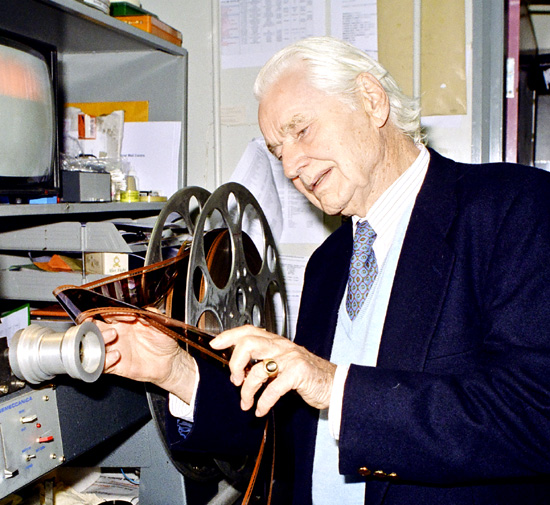Ken Annakin
- interview
|
This article first appeared in |
| Interviewed March 11, 2000 by Thomas Hauerslev | Issue 65 - July 2001 |
|
|
More in 70mm reading: |
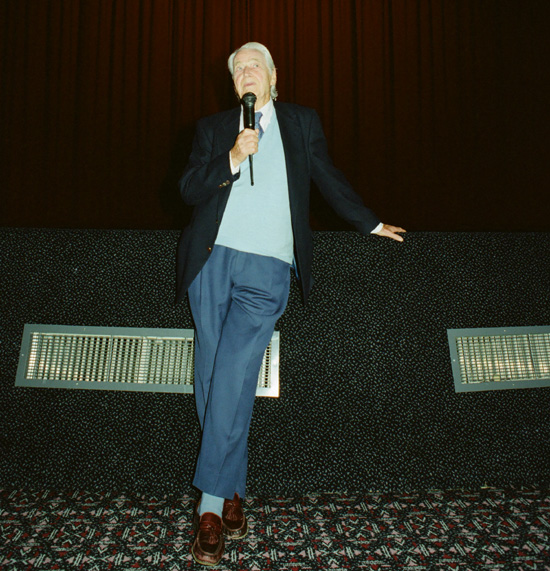 Ken
Annakin in Bradford, March 2000, introducing his film on the giant 70mm
screen. Image by Thomas Hauerslev Ken
Annakin in Bradford, March 2000, introducing his film on the giant 70mm
screen. Image by Thomas HauerslevTHa: You had the choice between Todd-AO and Super Panavision 70, both flat 70mm formats, whilst Ultra Panavision 70 is a compressed format. KA: For "Flying Machines" I leaned to the Todd-AO system because the camera system was light, very easy to operate and fast to load. You must remember that I was brought up with 3-strip Technicolor where it took 11 minutes to load a camera. Todd-AO really gave you results equal to 3-strip printing - except with time it tends to fade or go a little yellow. The use of Kodak's Eastmancolor means normal laboratory printing but the color fades - like you saw yesterday in "Flying Machines". But with Technicolor 3-strip printing, the color remains perfect, even 50 years later. THa: Tell me about camera crews and the filming of both films in the large 65mm format. KA: I don't really recall that the camera crews had any greater difficulties from working on ordinary 35mm cameras. I was busy enough laying out shots and directing the actors, but having been brought up on cameras I was aware of all the possible snags of Wide Screen. THa: You usually hear that 65mm cameras are huge, bulky and difficult to move - greatly restricts the Director. KA: Well, as I say, if you were brought up on Technicolor 3-strip, the Todd-AO cameras and Panavision were a "piece of cake" to set up and move. I was happy to use any new system, which gave me a bigger big screen than was possible with 35mm cameras. THa: You were saying "God was with you on "Battle of the Bulge"? What did you mean by that? KA: The first day of shooting, when the whole armada of Shaw's tanks came out from under the trees, we had prepared the ground to look snow covered, with marble dust. And we had 4 big wind machines behind my camera ready to blow snow all over the foreground. I gave the signal to start and Alex Weldon, my special effects guy started up his snow machines. As the tanks rolled out, the snow looked great, so I gave him the "thumbs up" sign, meaning "Great!" He looked at me - we couldn't hear each other because of the noise, and shook his head. Then he pointed upward, his lips mouthing "Not me - HIM". He meant that God was making the snow, and it continued to snow for 6 solid weeks. |
|
 Danish
"Battle of the Bulge" newspaper advert. Editors collection Danish
"Battle of the Bulge" newspaper advert. Editors collectionWe often had to walk 2 miles to the locations, and the tanks spun round and threw up mud in the snow. Believe it or not, I had 80 regular tanks from the Spanish army under my command. They passed perfectly for the German tanks used in the battle at this time...and I turned them into monsters! After the 6 weeks, the producer Philip Yordan showed me a cable he had just received from Jack Warner in Hollywood. It said "Congratulations! This is some of the best war material I have ever seen". This obviously gave me and my crew a great shot in the arm. THa: Can you remember why Cinerama was brought into "Battle of the Bulge"? KA: Around this time the Producers began to realize that they weren't going to have enough money to finish the film on the scale we were shooting. Suddenly a Guardian Angel appeared in the form of William R. Forman, who owned Cinerama. I think he had been shown my tank footage by Jack Warner, and he said, "This is perfect for my new process Cinerama!". He came over to Segovia with a special Cinerama Cameraman, George Willoughby. After discussions, we made arrangements for him to cover quite a few shots of tank movement from the air, plus downhill car shots, which almost had a 3D effect. For our part we carried on shooting with our Panavision cameras, and eventually printed everything in Cinerama process and format. Obviously it all worked!! I remember we premiered in the Cinerama theatre [On Sunset Boulevard, Los Angeles, Ed]. And Forman's girl friend led 500 troops down the boulevard before the show started. THa: How did his girl friend come into the picture? KA: One of Bill Forman's conditions for him to put his money up, was that we had to use a girl called Barbara Verle, in the movie. I remember Robert Shaw strongly objected to shooting 3 new scenes, which had been written for her. He said, "She's not a trained actress and she'll let down the picture". Shaw was adamant. Eventually, Forman said, "Look, I invested in this picture and I made Barbara a promise. I'll tell you how it came about. I was in jail for tax evasion for 16 months. She came and visited me every day. Every single day! And I made her a promise that when I got the chance I would help the poor kid become a movie star. That's why she's has to be in this picture". I eventually said to Shaw "This a very understandable and human reason. If she's no good I'll shoot the scenes in such a way that we can only just show her, and cut away to you or something else. Most reluctantly, Shaw agreed and we overcame the crisis. Barbara didn't become a great movie star, but Forman was able to keep his promise. Actually I seem to have done so many films where I had to use producers or moneymen's girl friends, so it wasn't anything new. I mean, after all, Irina Demick in "Flying Machines" was a result of Zanuck persuading me to shoot with her in the French Resistance sequences in "Longest Day". I remember when I was first asked to work with her; my wife, Pauline, said, "In a picture with all these stars, however will you get a performance out of her?" "I shall just over shoot" I said "Break down every shot and work with her as I would with a child". With Irina it worked wonderfully, and she became a very good actress - and very pretty. THa: Tell me about technical considerations arising from Todd-AO and Panavision? What services used to come with a camera package? KA: From what I remember, certainly on "Flying Machines", Christopher Challis the Director of Photography spent about 3 or 4 days at the Todd-AO headquarters, and was told all the things he could and could not achieve with their 70mm cameras. But we never had a technical supervisor come out on location. If we had any queries we could call the Todd-AO experts at any time. I have never been conscious of having a special technician around, since the old days of Technicolor. |
|
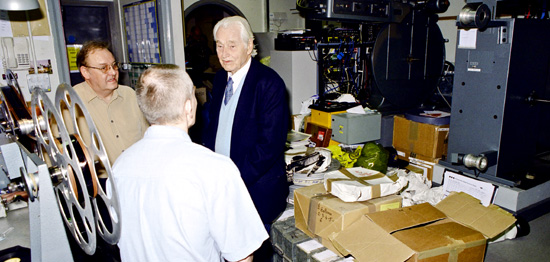 Ken
Annakin (right) in Bradford, March 2000, talking to the projectionists Tony
Cutts (left) and Duncan McGregor. Image by Thomas Hauerslev Ken
Annakin (right) in Bradford, March 2000, talking to the projectionists Tony
Cutts (left) and Duncan McGregor. Image by Thomas HauerslevTHa: What kinds of considerations were taken because of filming in 65mm? KA: Basically you are conscious about the fact that you have to fill a very large screen. My assistant on "Flying Machines", Clive Reed, on his fifth film with me, felt that the crowd were his to direct, or at least to place. Whenever I had to say to him "Look! I think there's a gap over there. We need a few extras..." he would feel that he had failed me on that day! I was very impressed when we saw "Flying Machines" yesterday [At Pictureville's Cinerama screen]. I was able to concentrate on using the old planes correctly and the actors, whilst leaving the crowd placement to Clive - knowing that he would always look into the viewfinder, and see that all areas were covered with cars or people. We made a great team!! THa: Were you involved with premieres in cinemas? KA: I was not involved in the way they made posters or projected my movies in cinemas, but certainly I was there for a quite a few of the premieres. In England, "Flying Machines" was premiered on Leicester Square, which had a good big screen, but it wasn't anything like the screen we saw it on in Pictureville last night. "Battle of the Bulge" I happened to be in Hollywood when it premiered, and for "Longest Day" Darryl Zanuck had me beside him when we presented to the Duke of Kent. As a director you were always invited to premieres at your home base, but quite often I could not get away from the next picture I was shooting. When "Longest Day" premiered at the Odeon Leicester Square, London, I was shooting another picture in Spain, but flew back just for that night. So I certainly never took part in any of the arrangements of these showings. |
|
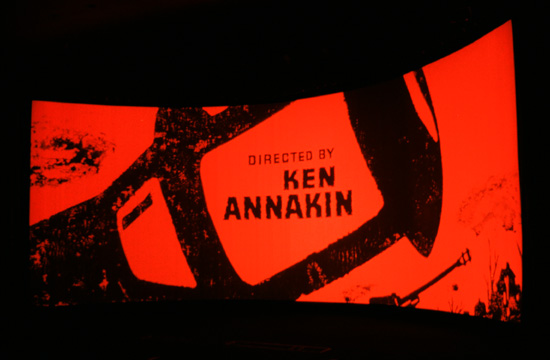 "I
could only achieve it on a system like Ultra Panavision 70", Ken Annakin, March 2000. "I
could only achieve it on a system like Ultra Panavision 70", Ken Annakin, March 2000.THa: Tell me about sound recording on the set. KA: I don't recall it made any difference except that the mike had to be hung higher to stay out of picture. We recorded all sound for "Flying Machines" and "Battle of the Bulge" on location as we filmed. I'm sure it is likely that a lot of post syncing was done afterwards in the studio. It's a strange thing nowadays to read about Directors who are expected to go through every step of Post Production. In the days that I was making these big movies, I rarely went through more than one stage. You completed your final Director's cut and then it went into the Studio Post Production "machine", and they did all the rest of the work. Certainly on "Flying Machines" I was very much involved with the music, but didn't take part in the final dub, nor on "Longest Day" or "Battle of the Bulge". On the latter as I have said we had almost run out of money, so much so, that I first was asked to edit my final battle scenes personally with just the help of a Spanish assistant. I hadn't been editing myself for quite some years but I enjoyed doing that and it looked excellent. It remained to have the tank special miniatures filmed by Eugène Lourié, our special effects guy. I never saw the film again until the premiere in Hollywood. Philip Yordan met me with a rather guilty look in the foyer and said "Look, Ken, my co-producer Milton Sperling tried to improve what you had edited, but we never got it back being as good again as your cut". That taught me that in such a situation you must always make a personal dupe of your work, so that if anyone plays around with it, you can put it back again. There is always some kind of lesson you learn on every film. THa: Any recollection about screening of rushes? KA: We never saw them on a big screen, only makeshift 6 x 5ft screens and we were not in the days where everyone could watch your work on a tiny video screen. I preferred it that way, because it was often good that it should only be you as Director knowing where you were heading. THa: Did you see them on curved screens or flat screens? KA: Always on flat screens. |
|
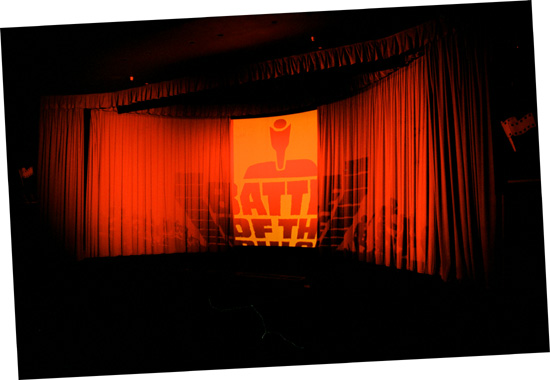 "Congratulations! This is some of the best war material I have ever seen".
Jack Warner, Hollywood "Congratulations! This is some of the best war material I have ever seen".
Jack Warner, HollywoodTHa: But still you shot the film for Cinerama? KA: Yes - but one had to imagine the final effect, and of course you got the feedback from the Cinerama people themselves who were seeing the rushes. If they had any extra suggestions or changes, we would hear about them and take care of them if possible. THa: How did the title and song "Those Magnificent Men in Their Flying Machines" come about? KA: Jack Davis and I had called our movie "Flying Crazy"; but Zanuck decided that it sounded like a B-picture - not big screen. His marketing people came up with the title from the dialogue where the flyers were described as magnificent men, and obviously somebody involved with the title built it up into "Those Magnificent Men in Their Flying Machines". It wasn't our title by any means, and when the song was written both Jack and I had never imagined that the music would be as it is. We took home tapes and played them over and over again and I remember calling each other and saying "Not bad. Quite different and maybe it's a good idea". And so even though we were completely responsible for the visual movie someone else came up with the title and music. I recall that it was actually brought to us by Elmo Williams, who was Zanuck's associate on "Longest Day". I had got to know him quite well. He had been an editor but wanted desperately to direct. Zanuck made him head of Fox Studios in London, so therefore he was normally in charge of "Flying Machines". He was the one who found the composer Ron Goodwin, and believe it or not Elmo Williams' wife wrote the lyrics. I don't think that was ever really publicised, but that was how the music, lyrics and title came about and obviously, I have been very thankful for those contributions ever since. The tune had a beat and was irresistible. It has been played at the changing of the guards and special functions with the British Royal family. What more could one desire. Motion pictures photographed in MGM Camera 65 / Ultra Panavision 70 |
|
|
Go: back
- top - back issues Updated 21-01-24 |

